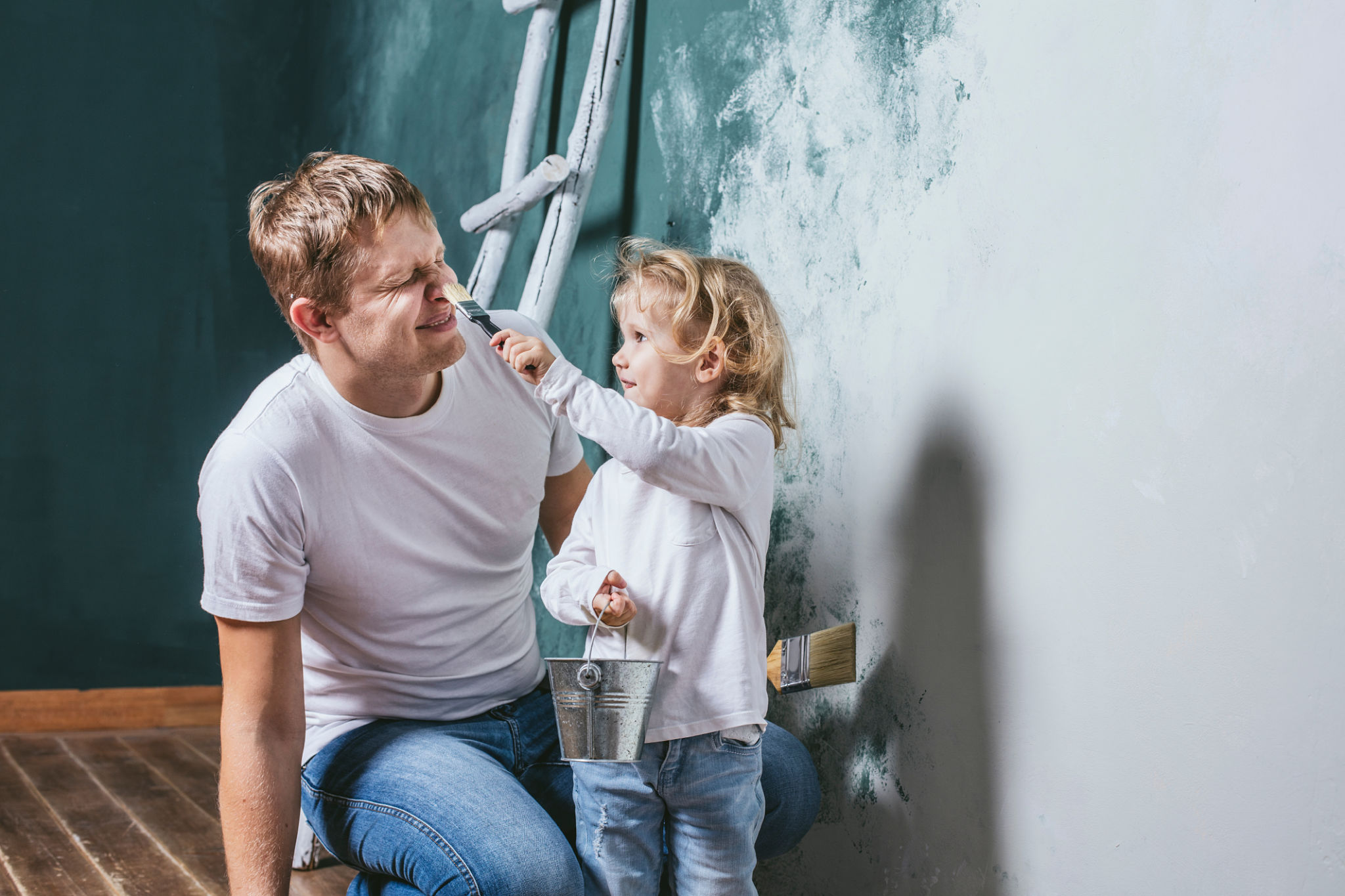Simple DIY Painting Tips for Small Rooms: A Step-by-Step Guide
Preparing Your Space for Painting
Before you even dip your brush into paint, it's crucial to prepare your small room for the task ahead. Start by removing all furniture or pushing it to the center of the room and covering it with a drop cloth. This not only protects your belongings but also provides ample space to move around freely.
Next, clean the walls thoroughly to remove any dust and grime. Use a mild detergent mixed with water and a sponge. Once cleaned, let the surface dry completely. After drying, inspect the walls for any cracks or holes. Repair these imperfections with spackle and sand them down for a smooth finish.

Selecting the Right Paint and Tools
Choosing the right paint is essential for achieving the desired look in a small room. Opt for lighter shades to create an illusion of space, as they reflect light better. Consider a satin or semi-gloss finish for added durability and easy cleaning.
Invest in quality painting tools, including a good set of brushes, rollers, and painter’s tape. Select a roller with the appropriate nap length for your wall texture, and use painter’s tape to protect trims and edges for a clean finish.
Getting the Paint Ready
Before applying paint to the walls, stir it well to ensure an even color distribution. Pour the paint into a tray and load your roller by rolling it back and forth until it is evenly coated. Be sure not to overload the roller to avoid drips.

Applying the Base Coat
Start by cutting in, which means painting the corners and edges where rollers can't reach, using a brush. Once this is completed, use a roller to apply paint in “W” or “M” shapes, filling in the gaps as you progress. This technique helps distribute the paint evenly across the surface.
Allow the first coat to dry thoroughly before deciding if a second coat is necessary. Most small rooms benefit from two coats to ensure full coverage and color depth. Always follow the recommended drying time specified on your paint can.
Adding Finishing Touches
Once the walls are painted and dry, remove the painter’s tape carefully to avoid peeling off any fresh paint. Touch up any missed spots or uneven areas with a small brush for a seamless finish.
If desired, consider adding accent elements to enhance the room's character. This could be a feature wall with wallpaper or stenciling for added texture and interest.

Cleaning Up
After painting, it's important to clean your tools properly to extend their lifespan. Rinse brushes and rollers with warm water until all paint is removed. Let them dry completely before storing them away.
Finally, dispose of any leftover paint responsibly by checking local regulations for paint disposal or recycling options. Clean up any spills or drips on floors and furniture promptly to avoid permanent stains.
Enjoying Your Newly Painted Room
With these simple DIY painting tips, you've transformed your small room into a fresh, inviting space. Step back and admire your handiwork, knowing you've enhanced your home's aesthetic appeal with just a few tools and some creativity.